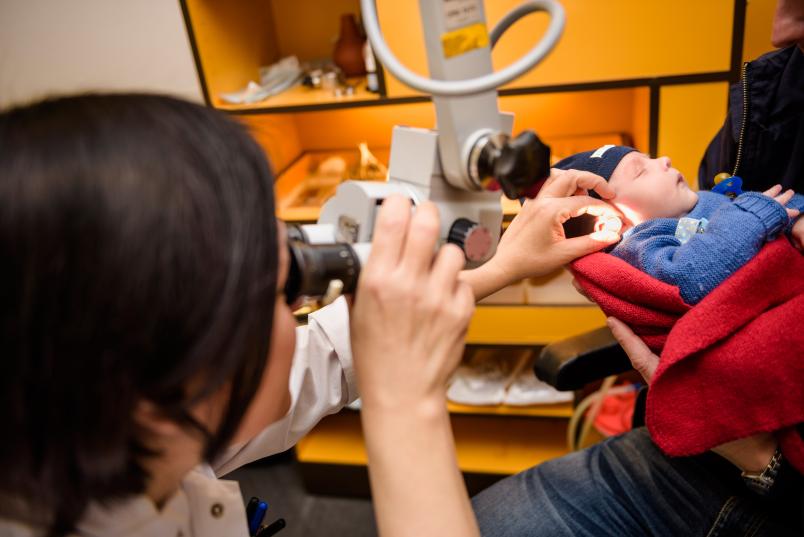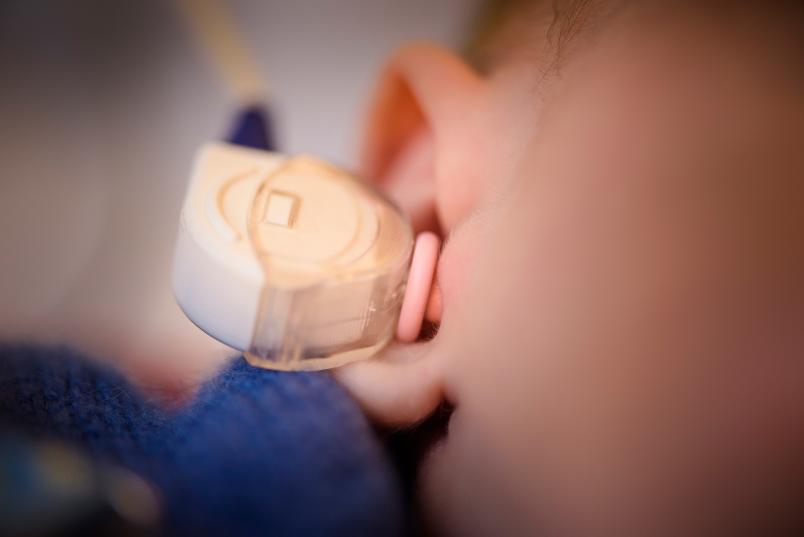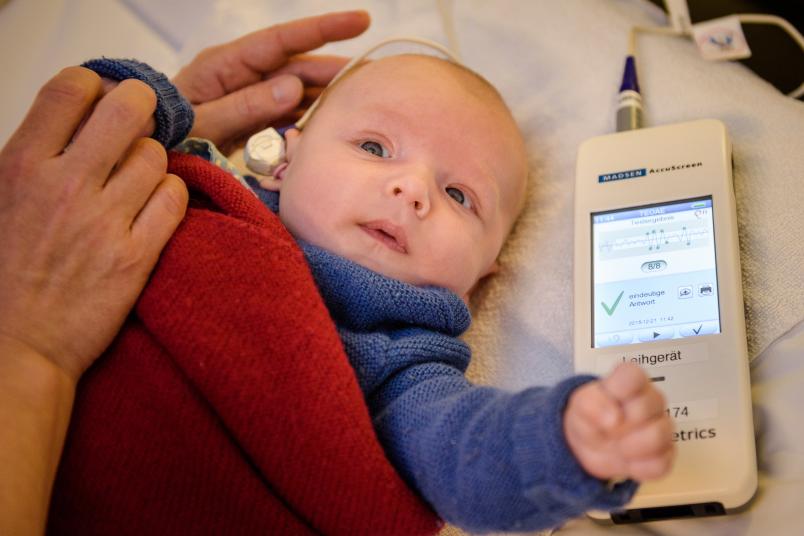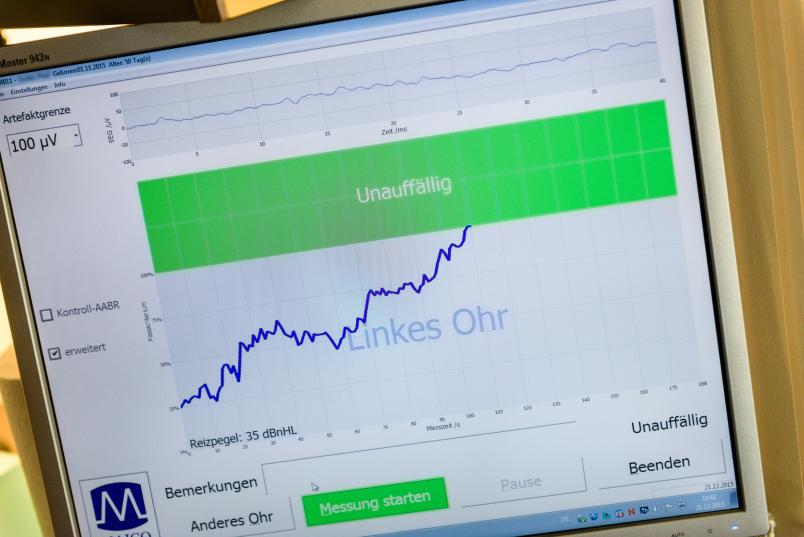Medicine
Hearing impairments in children
7.5 million children have a severely impaired sense of hearing. Detection at an early stage is important.
Anyone who enters the department of phoniatrics and pedaudiology at the St. Elisabeth Hospital in Bochum finds himself in a bustling place, yet at the same time feels quite at home. In the waiting room, children are playing; members of staff and students walk down the corridors and confer with each other.
Headed by Prof Dr Katrin Neumann, the department is situated in an aged brick building opposite the main hospital building. It is the destination of families whose children suffer from ear and hearing diseases and/or speech and language impairments. Fluency and voice disorders are likewise diagnosed and treated there. To this end, specialists from different disciplines work hand in hand: in addition to doctors, the team also includes speech-language therapists, audiologists, psychologists and social pedagogues.
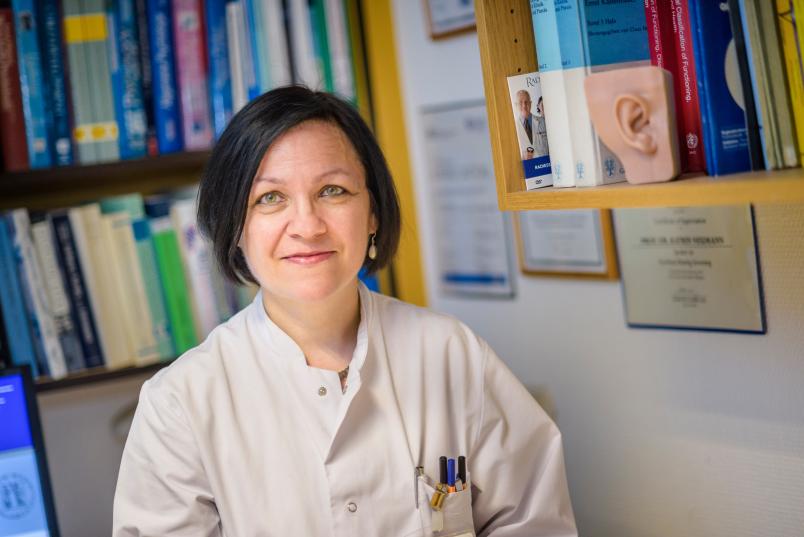
Voice, language, hearing – all subjects that Katrin Neumann has always found fascinating. “For a long time, I couldn’t decide if I wanted to study music or medicine”, she says. “Singing and playing the cello are my passions.” Later, after she had qualified as ENT physician, she heard of the option of training as a phoniatrician and pedaudiologist. Neumann: “That was a great chance to combine both my interests.”
Tool little attention being paid worldwide on hearing impairments
In addition to her duties in the clinic, she is deeply committed to ensuring that children worldwide who suffer from hearing impairments will receive appropriate treatment. In her opinion, the general public doesn’t take enough notice of their fate. “The question which disorders attract attention on an international level is to a great extent influenced by the focus of the World Health Organisation WHO”, Neumann explains.
There, the same topics have ranked on top of the list for years. Those include malaria, tuberculosis, HIV infection and several others. Hearing impairments, on the other hand, seem to be of minor importance; even though the number of patients is very extensive and their future perspectives are very poor if they receive no treatment. “In specialist circles, it is therefore referred to as the hidden disease”, says Neumann.
7.5 million children under the age of five have a severely impaired sense of hearing. A mere ten per cent of them receive essential medical treatment. In Germany, two in 1,000 infants per year are born with a hearing impairment; in other countries, the number is much higher.
Often genetic causes
About fifty percent of the disorders are caused by a genetic predisposition. In Islamic countries in particular, where marriages among blood relatives are common, the percentage amounts to 15 in 1,000 children. Unlike, for example, patients with visual impairments, whose condition is much more obvious and who used to be revered as wise human beings in some cultures, patients with hearing impairments are often ostracised in society.

Blindness separates people from things. Deafness separates people from people.
Immanuel Kant
In many parts of sub-Saharan Africa, people with hearing impairments are believed to be possessed by evil spirits. According to Immanual Kant: “Blindness separates people from things. Deafness separates people from people.”
This is something Katrin Neumann wants to change. Her passion is the improvement of the situation of hearing impaired children which requires, among others, hearing screening tests of newborns and infants. In Germany, the examination had not been routinely carried out for newborns until 2009. Katrin Neumann, who also heads the Technology Committee at the Coalition for Global Hearing Health, was one of the specialists who were helpful in promoting the launch of the screening. “It is incredibly important to detect hearing impairments at an early stage,” stresses the physician.
Early treatment important
Even though the inner ear forms during pregnancy, the cochlear nerve and the pathways in the brain mature in specific periods – the most important ones peak in the first 40 weeks of life – and for this purpose, they require external acoustic stimuli.
“If a hearing impairment is not recognised and treated during this sensitive phase, the result will always remain deficient – no matter how well we provide for the affected children afterwards”, says Neumann. The precarious thing is: the children’s career in language and social development, school performance and in their professional life correlates strongly with the date when they received treatment for the first time. Neumann has demonstrated this in a large cohort study for Germany – one of the predispositions that a newborn hearing screening has been mandated.
Two tests for the diagnosis
In Germany and other developed countries, two objective tests are available for newborn hearing screening purposes: TEOAE (transient evoked otoacoustic emissions), a short acoustic stimulus is applied to the infant’s ear. A healthy inner ear generates a sound in response, which can be recorded by high-sensitivity microphones. The examination is painless for the children and is over in a few seconds. The same applies to the other method, namely AABR (automated auditory brainstem response), where a response of the inner ear, the auditory nerve and the auditory brainstem is measured via electrodes placed on the scalp.
Katrin Neumann invests a lot of time and effort into making the screening available to all children worldwide. She travels to developing countries several times a year, mostly privately, in order to train junior doctors and audiology students in pediatric audiology. Since 2007, she has, moreover, been involved in various WHO projects as an authorised expert. The WHO requested its member states to develop national plans for the detection, prevention and treatment of hearing impairments in children as far back as 1995.
Katrin Neumann invests a lot of time and effort into making the screening available to all children worldwide. She travels to developing countries several times a year, mostly privately, in order to train junior doctors and audiology students in pediatric audiology. Since 2007, she has, moreover, been involved in various WHO projects as an authorised expert. The WHO requested its member states to develop national plans for the detection, prevention and treatment of hearing impairments in children as far back as 1995.
Survey: hearing screenings worldwide
Supported by her international colleagues, Katrin Neumann performs at current a study in order to survey the global status of newborn and infant hearing screening. So far, data from 151 countries are available, representing more than 92 per cent of the world population. Based on questionnaires she asks for information such as: does your country have hearing screenings? Which methods are used? Who carries out the screening and where?
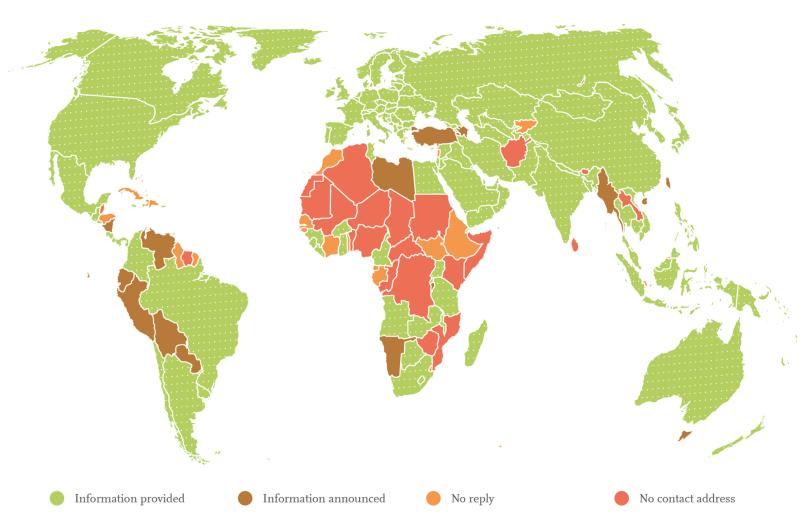
The results so far: more than 50 per cent of the participating countries have introduced hearing tests for newborns and infants basing on the above named objective methods. Moreover, it has been determined that the screening in those countries is more efficient if it is mandated by the government. The study had also confirmed the assumption that the prevalence of infantile hearing impairments in underdeveloped countries is considerably higher than hitherto assumed.
WHO’s resolution planned
Katrin Neumann is planning to add another 43 data records. To this end, she undertook the task of finding relevant contacts in the countries that have been missing to date. The job turned out to be quite difficult, because in some parts of the world there are hardly any ENT physicians and audiologists at all, for instance in sub-Saharan Malawi.
The researcher from Bochum is nevertheless quite confident that the situation of children with hearing impairments is going to improve worldwide. She hopes that the WHO officials at the German Ministry of Health can be induced to get a new WHO resolution off the ground. Such a resolution is meant to place the member states under the obligation to enforce and regularly control national plans for preventing and combatting hearing impairments. Neumann has been recently involved in drafting the relevant WHO policy.
